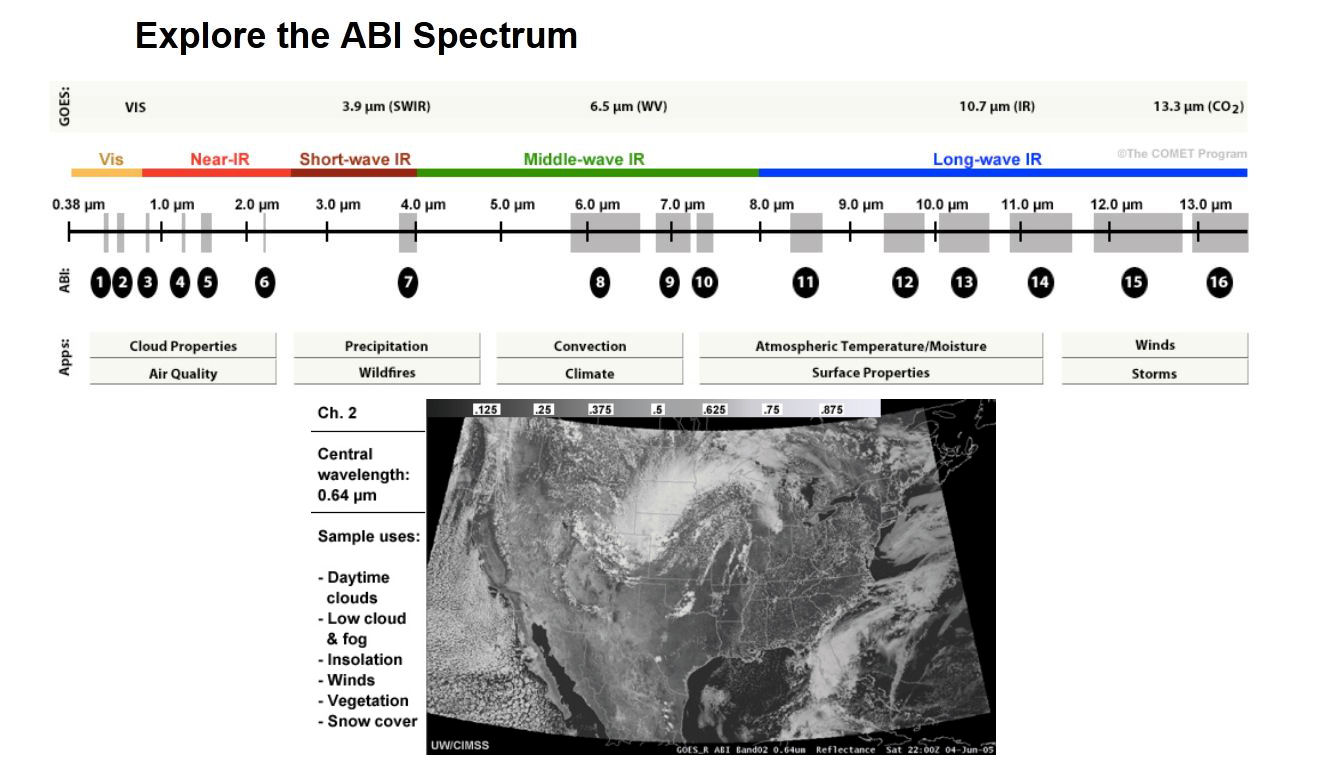
[ Archive ]

 |
ASPB and CIMSS Weekly Report
[ Archive ] |
 |
IN THE PRESS:
UW Satellite Science Highlighted in OnWisconsin Magazine: An article titled "Ill Wind" in the University of Wisconsin's online OnWisconsin Magazine highlighted satellite science at the Cooperative Institute for Meteorological Satellite Studies (CIMSS)/Space Science and Engineering Center (SSEC) in the context of Superstorm Sandy (http://onwisconsin.uwalumni.com/departments/news_notes/an-ill-wind/). The article points out that "Last October, as Superstorm Sandy bore down on the coast of New York and New Jersey, national weather services relied on the UW’s Space Science and Engineering Center (SSEC) to get the satellite data that would help them analyze the storm’s behavior." Chris Velden was interviewed for the article. (J. Key, E/RA2, 608-263-2605, jkey@ssec.wisc.edu; J. Phillips, SSEC)
ITEMS FOR THE ADMINISTRATOR:
ITEMS FOR THE ASSISTANT ADMINISTRATOR:
ITEMS FOR THE OFFICE DIRECTOR, STAR:
UK Met Office Begins Assimilating Metop-B Polar Winds: On
19 February 2013, the Met Office (UK) began assimilating
satellite-derived winds over the polar regions generated at the
Cooperative Institute for Meteorological Satellite Studies (CIMSS) using
data from the Advanced Very High Resolution Radiometer (AVHRR) on
Metop-B (Meteorological operational Satellite). The Met Office found the
data quality to be the same as that from Metop-A, and that the Metop-B
winds provide an additional 200 or so observations per assimilation
cycle. (J. Key, E/RA2, 608-263-2605, jkey@ssec.wisc.edu; D. Santek,
CIMSS, 608-263-7410)
CIMSS Visits NWS Office in Southern Region: From 5 through 7 March 2013, four scientists from the Cooperative Institute for Meteorological Satellite Studies (CIMSS) visited the National Weather Service (NWS) forecast office in Peachtree City, Georgia, to discuss satellite meteorology and upcoming changes to space-based observing systems which may benefit operational meteorologists. Approximately half of a dozen forecasters participated in talks from Lee Cronce, Jordan Gerth, Scott Lindstrom, and Kathy Strabala. Forecasters were particularly interested in satellite products that can help improve short-term aviation forecasts. The CIMSS group also visited the Center Weather Service Unit (CWSU) in Hampton, Georgia, and The Weather Channel in Atlanta. The visit was part of an effort since 2006 to transition more satellite research products to NWS operations, which requires understanding their evolving needs and providing adequate training. (J. Gerth, CIMSS, 608-263-4942)
ITEMS FOR THE DIVISION CHIEF, CoRP:
New COMET Module on the GOES-R ABI: Cooperative Program for Operational Meteorology, Education, and Training (COMET) has released a new module called "Geostationary Operational Environmental Satellite (GOES)-R Advanced Baseline Imager (ABI): Next Generation Satellite Imaging". This extension of the COMET module “GOES-R: Benefits of Next Generation Environmental Monitoring” focuses on the ABI instrument, the satellite's 16-channel imager. The module introduces the ABI's key features and improvements over earlier GOES imagers and lets users interactively explore the ABI's 16 channels. The project lead was P. Dills, COMET. The Principal Science Advisers were J. Gurka and T. Schmit of NESDIS with additional science contributions by S. Bachmeier, CIMSS. Data were provided by a number of groups. The module is available at http://www.goes-r.gov/users/comet/goes_r/abi/index.htm. (Note that one needs to register at COMET to access the module). (T. Schmit, E/RA2, 608-263-0291, tim.j.schmit@noaa.gov) (Click image to enlarge)
(Click image to enlarge)VISITORS:
University of Oklahoma PhD Candidate visits and conducts seminar: Kimberley Klockow visited the Cooperative Institute for Meteorological Satellite Studies (CIMSS) on 7 March 2013 to provide an overview of her PhD research at the University of Oklahoma regarding a social science investigation of the public's reaction to tornado warnings. She gave a seminar titled "Bridging the Gap: Mapping Different Ways of Knowing about Severe Weather". After the completion of her PhD degree in August she will be a possible postdoctoral research candidate at CIMSS. Her role would be to expand social science weather research into the realm of satellite meteorological and network with geography, economics, and environmental institute departments across campus. She met with Brad Pierce and Tim Schmit (NOAA/NESDIS/ASPB) as well as several other University of Wisconsin faculty, scientists, and researchers. (W. Feltz, CIMSS, 608-265-6283, S. Ackerman CIMSS)
NEXT WEEK:
LOOKING AHEAD:
| Archived Weeklies Page | Submit a report item |